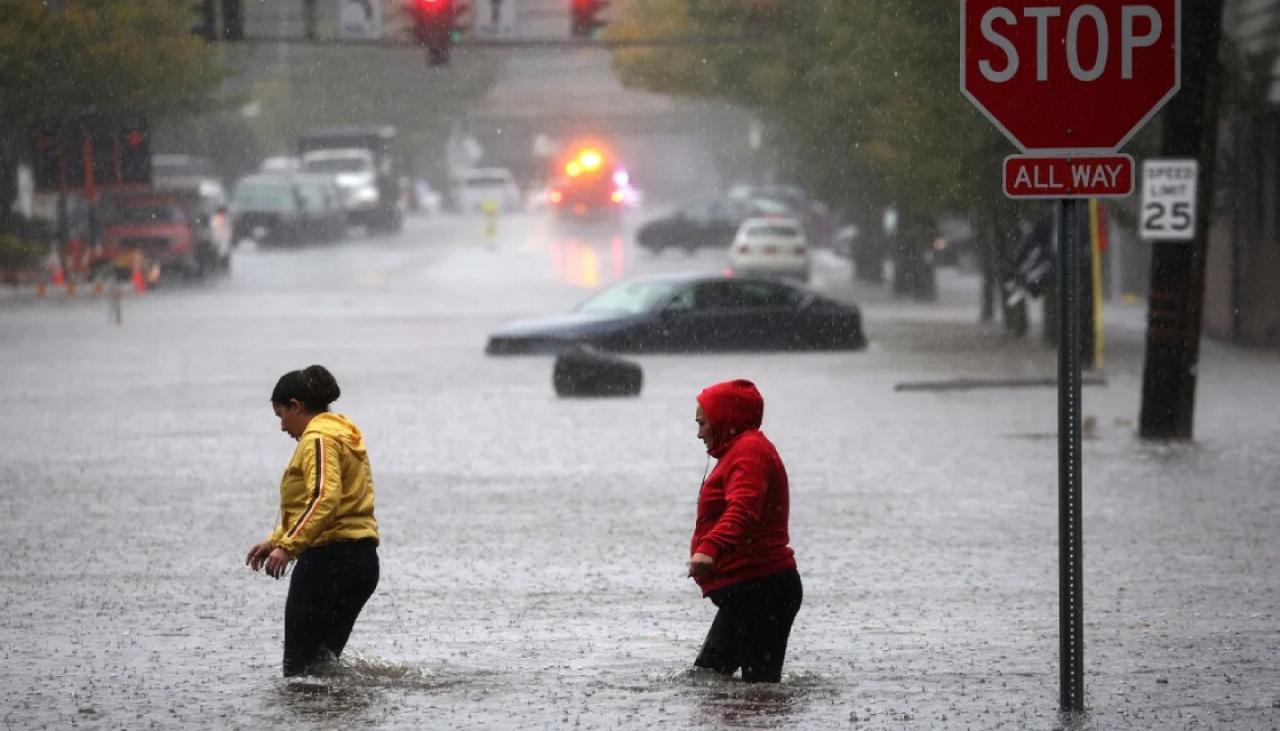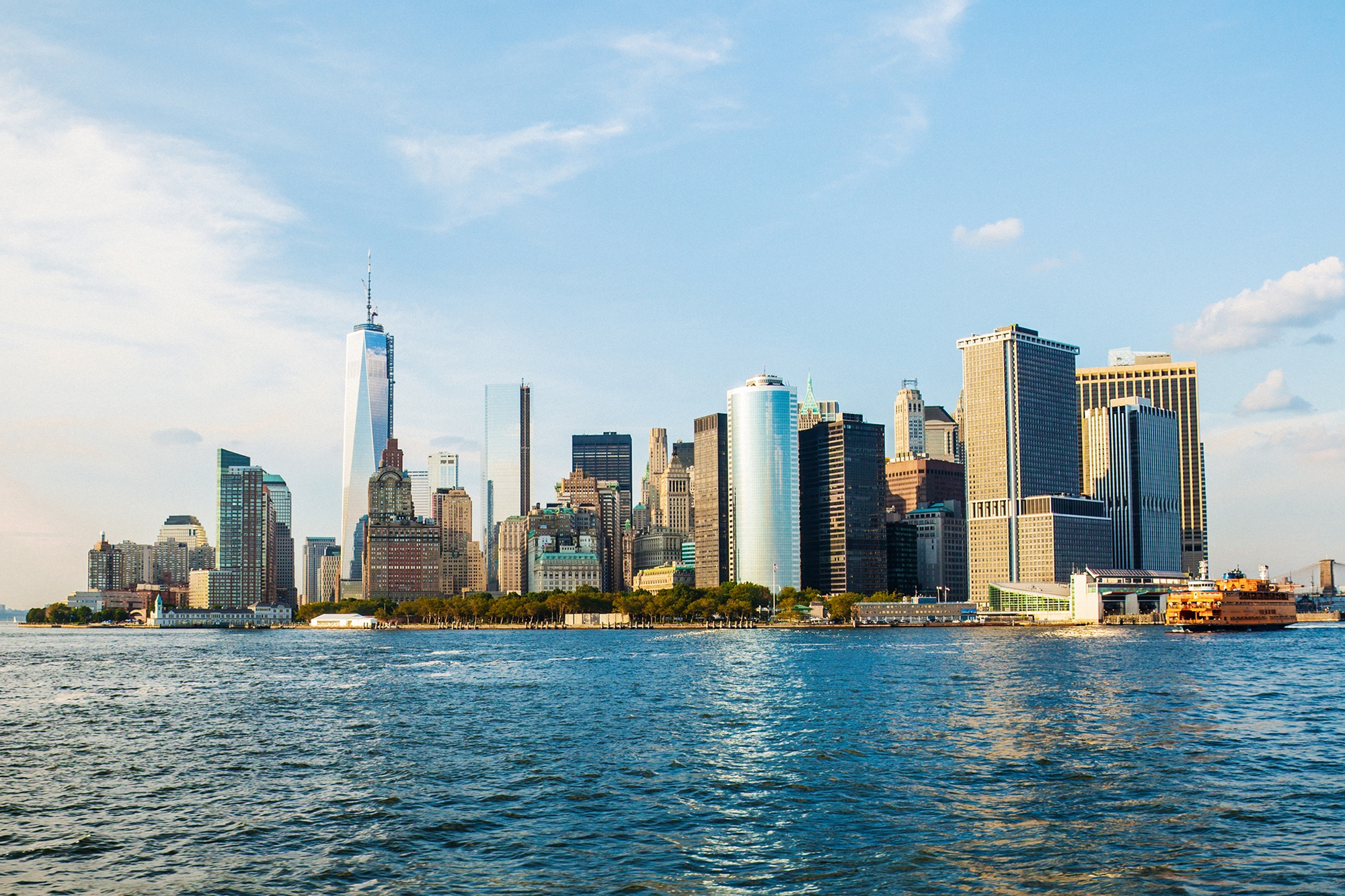New York City is sinking. Not because of the recent flooding that left commuters swimming in the streets of the West Village and cars stranded on the Franklin D. Roosevelt Expressway, Space citing research information from NASA.

People walk through flooded areas in the suburb of Mamaroneck, New York City on September 29. Photo: Mike Segar/Reuters
From 2016 to 2023, researchers at NASA's Jet Propulsion Laboratory (JPL) used a space-based method called Interferometric Synthetic Aperture Radar (InSAR) to create a 3D map of the ground beneath New York City, measuring vertical ground motion over time.
They found that during this time, the New York City area sank an average of 1.6mm per year.
In the report "The Weight of New York City" published in AGU Magazine in May 2023, geologist Tom Parsons said: "New York City faces significant challenges from flood risk; the threat of sea level rise is 3-4 times higher than the global average along the Atlantic coast of North America."
What is the cause?
According to geologists, some of the land beneath New York City is naturally sinking.
About 24,000 years ago, an ice sheet covered the New England region of northeastern America. Under its enormous weight, the land below sank like a mattress being compressed under the weight of a bowling ball.
Meanwhile, areas around the iceberg – including New York City – have moved upward.
Now that the ice has melted, the ground is returning to normal in a process called glacial isostatic adjustment. For New York City specifically, that means the ground is sinking.
However, research by a team of NASA scientists has revealed new discoveries about New York City's subsidence process, and some of it is not natural and has a relationship with human (artificial) activities.
“We created such a detailed map of vertical soil motion in the New York City area that there were striking features that had not been noticed before,” said Brett Buzzanga, a postdoctoral researcher at JPL and lead author of the paper.
In Queens, for example, land is sinking faster than average at the runways of LaGuardia Airport and Arthur Ashe Stadium, which hosts the US Open tennis championship each year. That's because they were built on landfill.
Governors Island in Manhattan and Rikers Island are Subsidence hotspot (or other sinks) associated with landfills".

Is New York City sinking under the weight of its skyscrapers? Source: Shutterstock/New York skyline
NASA's research team also discovered points where the land is rising (also known as uplift). In East Williamsburg, the Brooklyn borough of New York City, the land is moving upward at about 1.6mm per year.
And in Woodside, Queens, the land rose 6.9mm per year from 2016 to 2019, although that trend has now stabilized.
Groundwater pumping may be a factor in this short-term uplift, according to study co-author Robert Kopp of Rutgers University (New Jersey, USA).
Upcoming studies will continue to investigate surface displacement globally, including the ISRO-NASA Synthetic Aperture Radar (NISAR) mission scheduled to launch in 2024.
As sea level rise occurs across the planet, NISAR data could be invaluable for response planning.
Previously, AP Heavy rains blanketed the New York metropolitan area with terrifying force on September 29, paralyzing several subway and rail lines, stranding drivers on highways, flooding basements and forcing the terminal at LaGuardia Airport to close for hours.
The US National Weather Service said 9.7 inches (21.97 cm) of rain fell at John F. Kennedy Airport, surpassing the record for any September since 1960.
Explaining why New York City suffered this record-breaking vomiting, meteorologist Ross Dickman of the National Weather Service said that the remnants of tropical storm Ophelia in the Atlantic combined with a mid-latitude system coming from the west - at a time of year when ocean conditions are particularly favorable for storms - caused the rain to fall across New York City in 12 hours.
As the planet warms, storms forming in a hotter atmosphere can hold more moisture, making extreme rainfall more frequent, according to atmospheric scientists.
Source: Space, AP
Source


































































































Comment (0)